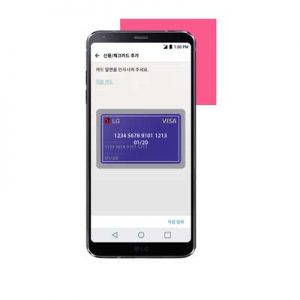South Korea-based consumer-electronics giant LG Electronics plans to bring its LG Pay mobile-payments service to the U.S. in a few months. But with its smart phones in the hands of only 10% of American consumers, how much market share LG Pay can capture and how it can distinguish itself from established U.S. mobile-payment rivals is unclear.
LG plans to roll out LG Pay when it unveils two expected new smart phones in the U.S. at about mid-year, according to reports in the Korean press. LG Pay has been available in Korea for about two years.

LG’s phones run on Alphabet Inc.’s Android mobile operating system. Just this week, Mountain View, Calif.-based Alphabet rebranded both its Android Pay service for purchases and Google Wallet person-to-person payment service under the Google Pay umbrella.
A U.S. LG spokesperson did not respond to Digital Transactions News’s inquiries. Payments consultant Richard K. Crone of San Carlos, Calif.-based Crone Consulting says LG Pay’s version of Android uses host card emulation, a variant of contactless near-field communication technology that enables the smart phone to exchange information with the point-of-sale terminal.
With HCE, financial institutions can create NFC wallets without a chip, forgoing the need for them to pay a mobile network operator or phone manufacturer for access to a phone’s secure element. That’s because HCE stores the cardholder’s payment credentials in the cloud rather than on the secure element, as in Apple Inc.’s proprietary NFC system for the iPhone and Apple Pay.
Despite HCE’s advantages, LG Pay clearly will face a tough battle once its disembarks on U.S. shores. According to New York City-based 451 Research, 24.2% of U.S. consumers who used a digital wallet for purchases in 2017’s third quarter used Apple Pay. Some 15% of consumers used Android (now Google) Pay, while 6.7% used Samsung Electronics Co. Ltd.’s Samsung Pay. PayPal Holdings Inc. is by far the market leader, with 67.5% of 451’s survey respondents using it.
What’s more, LG ranks a distant third in U.S. smart-phone market share, according to Reston, Va.-based comScore Inc. As of last June, 10% of smart-phone subscribers ages 13 and older had an LG phone compared with 44.9% for Apple and 29.1% for Samsung.
Crone describes the current differences between LG Pay and Android Pay as “none.” But that doesn’t mean LG shouldn’t throw its hat into the U.S. mobile-payments ring. “It gives them a feature that allows them to attract attention to their phone,” he says.
While Apple Pay is leading, none of the three general-purpose “Pays” in the U.S. is yet getting heavy usage. That means LG Pay has the opportunity to distinguish itself in various ways, including its pricing and terms for partnerships with financial institutions, Crone notes. He adds that Samsung, whose technology enables payments at POS terminals that aren’t enabled for NFC, is developing various services to boost Samsung Pay usage, including through private-label services and offers. And Apple recently added person-to-person payments to Apple Pay with its Apple Pay Cash service.
“Nobody’s cracked the code yet, but LG has the opportunity to ride the coattails” of the established players, Crone says.
Another possible distinction LG Pay has is the Wireless Magnetic Communication technology it gets from Pittsburgh-based Dynamics Inc. WMC enables contactless transactions to occur between smart phones and magnetic-stripe POS terminals that don’t support NFC.





